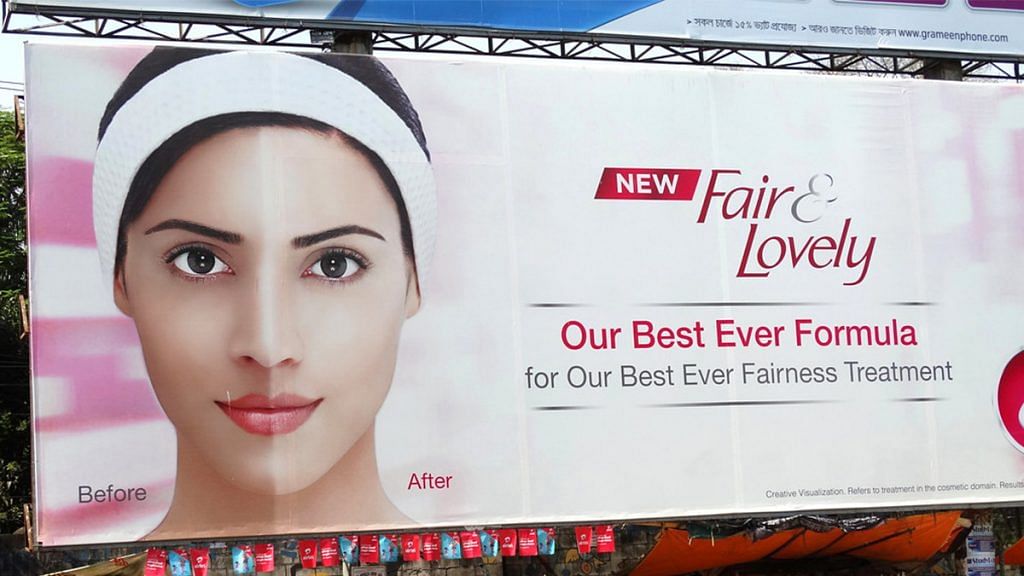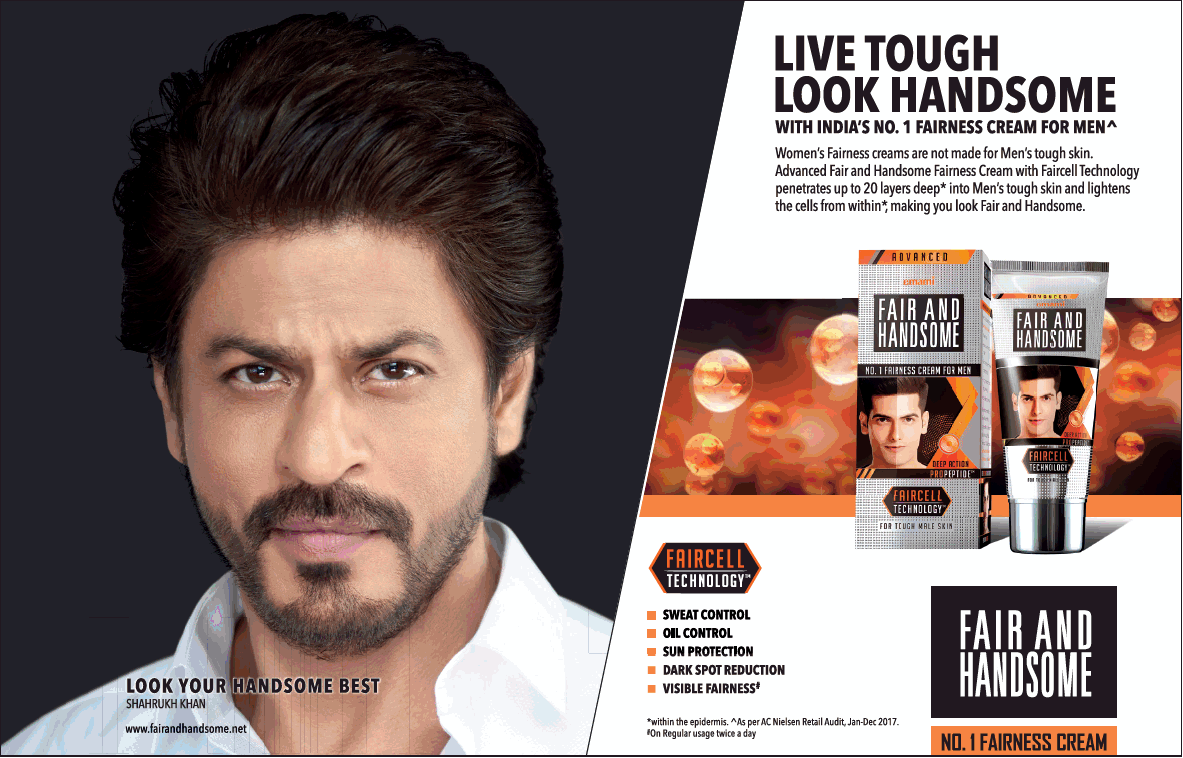When White Models Appear In Photographs, Shoppers Are More Likely To Click On Them: Civilization Today Continues To Be Handicapped By The Prejudices Of The Past!
Experts agree that the online fashion retail business is highly reliant on white models, primarily from Eastern Europe, who sell anything from lingerie to lehengas. While their bodies lend themselves beautifully to Western clothes, the same cannot be said for ethnic designs since the cuts nearly always make them appear excessively thin or too tall. In all likelihood, they are the favoured option.

Ananth Narayanan, former CEO of Myntra and Mensa Brands founder, recently said that according to an experiment conducted by the online shopping site, buyers tend to click more on products with white-skinned models. During a podcast with Zerodha co-founder Nikhil Kamath, Narayanan stated that products featuring a white model have better clickthrough rates (the percentage of individuals who see an ad or product listing who click on it).
Although it may have helped the e-commerce website to have higher clickthrough rates on performance marketing, which is relatively economical, he stated this to explain why big brands like Louis Phillipe and Peter England use foreign models for their brands. These gestures raise questions about our so-called civilised society, which is still haunted by the prejudices of the past.
As someone who grew up in India, the above topic never occurred to me before. I’d been all too used to passing by billboards with blonde, blue-eyed couples modelling. My eyes had grown so accustomed, passive and immune to Western foreigners modelling Asian brand apparel that I hardly even noticed.
So when I was asked in a friendly family discussion by a journalist cousin, “Why are most of these models white?” I wasn’t prepared to answer. The best I could come up with was, “Because Asians think white skin looks better,” which is as flattered, lazy and insensitive as anything articulated by Donald Trump – especially given that the sample of brands which led to the said question doesn’t even represent the entire globe of Asian brands.

Unfortunately, the stereotype that Asians aspire to Western beauty standards is not wholly incorrect. Japan’s preoccupation with Miranda Kerr, India’s high sales of “Fair & Lovely” cosmetics, and Thailand’s skin-whitening pills are all examples of Asians’ desire to “look white.” Even Hello Kitty, one of the most recognisable Asian animation characters, was revealed to be a British student, not a cat, with the full name Kitty White. In any case, pointing to “aspirational looks” as the primary reason Asians choose white models would not be an ignorant statement.
“In Asia, skin whitening has a long history dating back to ancient China.” The proverb “one white covers a hundred ugliness” was passed down through the generations. With the world becoming more connected, these thoughts circulated across the globe and hence, whites took the position of supremacy. And India is no longer untouched by this.
Recall the era of 1.5 decades back, I guess Fair and Lovely used to be one of those prominent names in every household’s cosmetic department. In fact, an article from 2020 says that Fair and Lovely is India’s best-selling skin whitening cream, with yearly sales of 24 billion rupees ($317 million; £256 million). Teenagers and young women have purchased millions of tubes in a country where lighter skin is commonly connected with beauty since the 1970s when it first entered the market. Top Bollywood stars and actresses have endorsed Fair and Lovely, which advocates fair skin as a method of obtaining love or a glamorous profession.
Despite the fact that consumer behemoth Unilever rebranded its blockbuster skin-lightening cream Fair and Lovely and eliminated the term “fair” from its name, nothing appears to have altered. While the announcement has been welcomed, critics argue it does not go far enough – and demand for such products in India shows no signs of waning.
Why the white skin is so supreme in the Indian market?
Around a decade back, according to market experts ACNielsen, India’s whitening-cream market was valued at $ 432 million in 2010 and was rising at an 18% annual rate. According to reports, Indians used 233 tonnes of skin-whitening goods in 2012, spending more money on them than on Coca-Cola. Indians are extremely racist. It’s profoundly embedded. However, peer pressure, periodicals, billboards, and television advertisements propagate the perception that fairness is the ideal.
And if you think only girls are a prey to this, recall the commercial of ‘Fair and Handsome’. Emami Cosmetics launched Fair & Handsome for Men in 2005, with an advertisement portraying Bollywood actor Shah Rukh Khan showing a tube of whitening cream to an eager young fan. The campaign openly uses this punchline where Shah Rukh Khan is pronouncing that to be successful, you have to be fair. So, whatever gender you are, we all, as a society, are ingrained into the belief that white is better!

Experts agree that the online fashion retail business is highly reliant on white models, primarily from Eastern Europe, who sell anything from lingerie to lehengas. While their bodies lend themselves beautifully to Western clothes, the same cannot be said for ethnic designs since the cuts nearly always make them appear excessively thin or too tall. In all likelihood, they are the favoured option.
Industry experts in 2015 estimated that they charge nearly the same as Indian models in the field. Why is the country’s e-commerce citadel filled with white models if models who exhibit clothes on apparel websites charge almost the same at identical levels of experience? Is India’s love of fairness reflected in the corporate world? It appears to be so.
How the ‘white display’ is taking the front seat of the ‘fashion car’?
It’s practically hard to determine how many Asian brands use white models, but it’s enough to raise eyebrows. Fair-skinned foreigners appear not only in fashion apparel advertisements but also in magazine editorials and even domestic goods television advertising. This is true for a number of countries in East, Southeast, and South Asia, including the aforementioned Japan, India, and Thailand, as well as South Korea, China, and Singapore.
There is no written rule requiring any brand to utilise an ethnically native model to the country in which it is based. Such foolishness would actually hinder the much-needed progress toward diversity and minority representation, particularly in the fashion and beauty industries. But if “diversity in India” means “more white models,” the picture flips. There is no problem in having fair-skinned models, but having only them on front or on mass could be potentially harmful.
Even if the ‘tan skin’ is appreciated nowadays, the proportion of white and tan is not justified. Moreover, the scale goes merely from white to tan; there is no or minimal involvement of ‘black beauty’! Again, we see a hint of racism in our urbanised, globalised, and civilised society!
Is it human nature, or AI is also a prey to white?
AI is nothing but the creative intelligence of the human mind. So, more or less, it will have a similar ‘machinery’ opinion about the skin colour. Face recognition algorithms, frequently referred to as AI algorithms, have great classification accuracy (above 90%), but these results are not universal. An increasing corpus of studies reveals disparities in error rates across demographic categories, with female, Black, and 18-30-year-old individuals consistently having the lowest accuracy.
An intersectional procedure was used to evaluate three gender classification algorithms, including those produced by IBM and Microsoft, in the seminal 2018 “Gender Shades” research. Darker-skinned females, darker-skinned men, lighter-skinned females, and lighter-skinned males were divided into four groups. On darker-skinned females, all three algorithms performed the poorest, with error rates up to 34% greater than on lighter-skinned males.

The surprising results prompted quick replies, establishing an ongoing debate over equity in face recognition. However, IBM and Microsoft announced initiatives to decrease bias by changing testing populations and increasing data gathering on specific demographics. A re-audit of Gender Shades validated a drop in error rates on Black females and looked into more algorithms, including Amazon’s Rekognition, which likewise revealed racial prejudice against darker-skinned women (31% error in gender classification). This result corroborated the American Civil Liberties Union’s (ACLU) earlier assessment of Rekognition’s face-matching capacity, in which 28 members of Congress, disproportionately individuals of colour, were mistakenly matched with mugshot images.
Amazon’s comments, on the other hand, were defensive, claiming problems with auditors’ methodology rather than addressing racial bias. These disparities are worrisome since Amazon has advertised its technologies to law enforcement. It was advised that the companies that offer these services have a responsibility to guarantee that their technologies and apps are equal.
Another important cause of racial discrimination in face recognition is its application. “Lantern laws” in 18th-century New York obliged enslaved individuals to carry lanterns after dark in order to be publicly visible. Advocates were concerned that, even if face recognition algorithms are made more equitable, the technologies would be used in the same spirit, causing disproportionate harm to the Black community in keeping with existing racist patterns of law enforcement. Furthermore, facial recognition might be used by ICE to target other marginalised communities, such as undocumented immigrants.
So, not only humans but intelligent AI is also racist, unfortunately!
Is it the fault of only the system and the platform, or we, as the common public are, also responsible for this?
We often target the casting agencies that they hire white models, and so the game of white skin moves on. But this is not the correct one. Remember, a ‘clap is never a function of one hand’.

It’s worth considering whether we, the general public, have a role to play. As with the discussion over why e-commerce companies choose models with obvious white skin over diversity, they are demonstrating what they believe the audience wants. “What’s really shocking is that almost nobody seems to talk about this problem.” If the public truly wants the situation to change, they must make their point in the only manner the fashion industry understands: by writing, tweeting and tagging the companies respectfully and demanding a gradual change in the system, where there is an acceptance that beauty goes beyond the pale!




